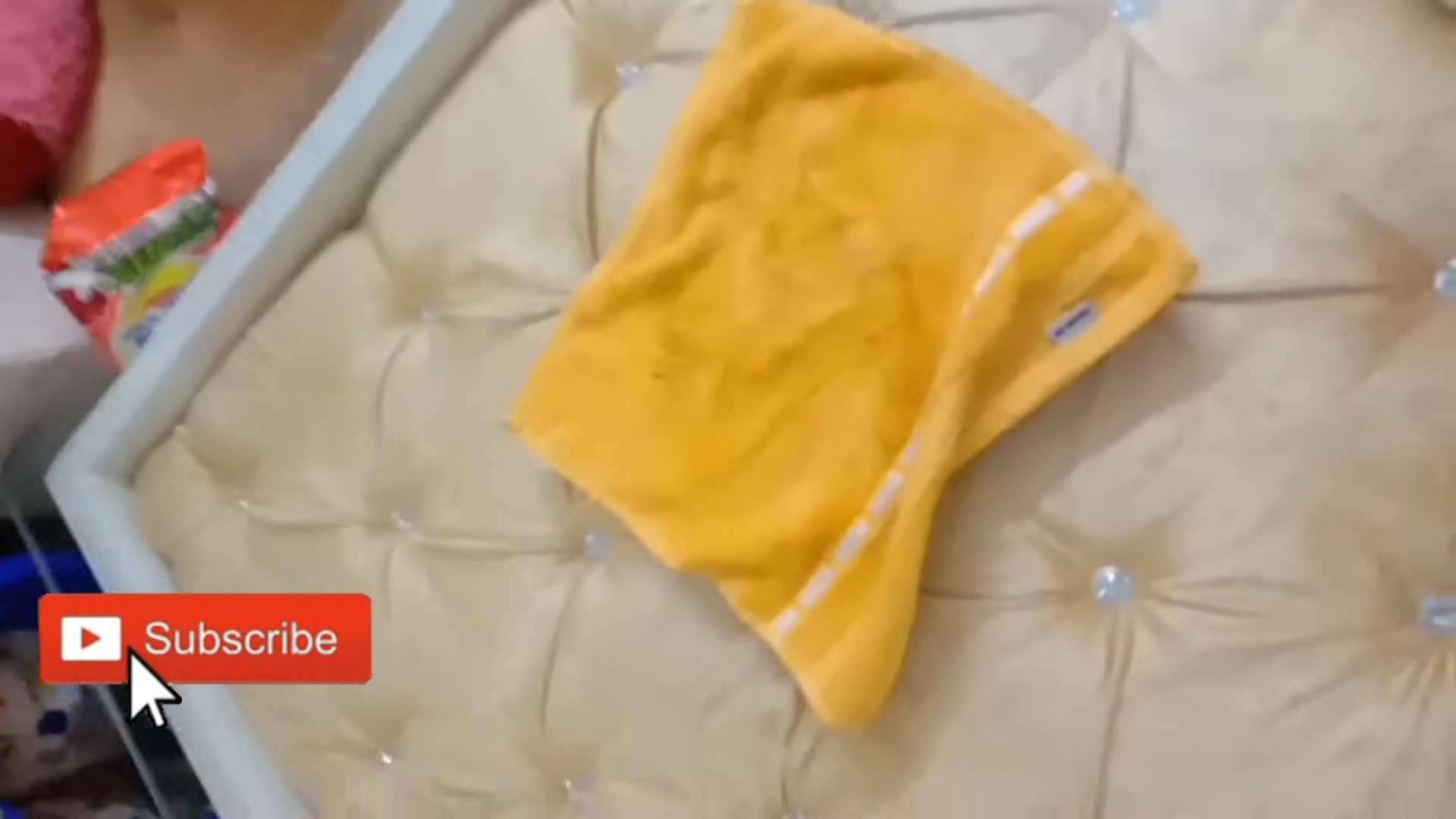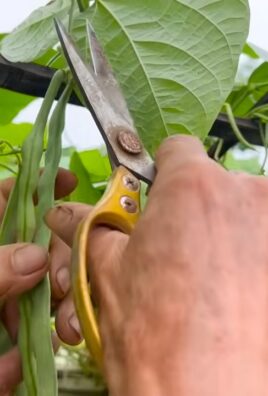Grow Radishes at Home? Absolutely! And you don’t need acres of land or a green thumb blessed by the gardening gods. I’m here to tell you that cultivating these peppery little gems is surprisingly easy, even if you’re a complete beginner. Forget those bland, store-bought radishes; imagine the crisp, vibrant flavor of freshly harvested radishes, bursting with zest, straight from your own backyard (or balcony!).
Radishes have a rich history, dating back to ancient times. They were a staple food in ancient Egypt and Greece, prized for their nutritional value and quick growth. In some cultures, radishes even symbolized good fortune and prosperity. Now, you can bring that same sense of abundance to your own life!
But why should you bother learning how to grow radishes at home? Well, for starters, they’re incredibly fast-growing, often ready to harvest in just a few weeks. This makes them perfect for impatient gardeners (like me!). Plus, they’re a fantastic way to add a pop of color and flavor to your salads, sandwiches, and snacks. More importantly, knowing where your food comes from and nurturing it from seed to table is incredibly rewarding. So, let’s dive into some simple DIY tricks and hacks that will have you enjoying a bountiful radish harvest in no time!

Grow Your Own Radishes: A Beginner’s Guide to a Speedy Harvest
Hey there, fellow gardening enthusiasts! I’m so excited to share my experience with growing radishes at home. They’re one of the easiest and fastest vegetables to cultivate, perfect for beginners or anyone looking for a quick gardening win. Plus, that peppery crunch is just irresistible! Let’s dive into how you can have your own radish patch in no time.
Choosing Your Radish Variety
First things first, let’s talk about radish varieties. There’s more to radishes than just the classic red globe!
* Cherry Belle: This is your classic, round, bright red radish. It’s quick to mature and has a mild flavor. A great starting point!
* French Breakfast: These are elongated, red radishes with a white tip. They have a milder, slightly sweet flavor and are delicious sliced in salads.
* Easter Egg: A mix of radishes in various colors – red, pink, purple, and white. Adds a fun visual element to your garden and your plate!
* Black Spanish: A larger, round radish with black skin and white flesh. It has a stronger, more pungent flavor and takes a bit longer to mature.
* Watermelon Radish: This one’s a showstopper! It has a pale green exterior and a vibrant pink interior, resembling a watermelon. It has a mild, slightly sweet flavor.
I personally love growing Cherry Belle and French Breakfast because they’re so reliable and quick. But don’t be afraid to experiment and find your favorites!
Preparing Your Radish Bed
Radishes are pretty low-maintenance, but a little preparation goes a long way.
* Sunlight: Radishes need at least 6 hours of sunlight per day. Choose a spot in your garden that gets plenty of sunshine.
* Soil: They prefer loose, well-drained soil. Compacted soil can lead to misshapen radishes.
* Soil Amendment: Amend your soil with compost or well-rotted manure to improve drainage and fertility. This will give your radishes a good start.
* pH Level: Radishes prefer a soil pH between 6.0 and 7.0. You can test your soil pH with a simple soil testing kit from your local garden center.
Step-by-Step Soil Preparation:
1. Clear the Area: Remove any weeds, rocks, or debris from the area where you plan to plant your radishes.
2. Loosen the Soil: Use a garden fork or tiller to loosen the soil to a depth of at least 6 inches. This will help the radish roots grow easily.
3. Add Compost: Spread a 2-3 inch layer of compost or well-rotted manure over the soil surface.
4. Incorporate the Compost: Use the garden fork or tiller to mix the compost into the soil thoroughly.
5. Rake Smooth: Rake the soil smooth to create a level planting surface.
Planting Your Radish Seeds
Now for the fun part – planting!
* Timing: Radishes are a cool-season crop, meaning they thrive in cooler temperatures. Plant them in early spring or late summer/early fall. Avoid planting during the hottest months of summer, as they can bolt (go to seed) quickly.
* Direct Sowing: Radishes are best direct-sown, meaning you plant the seeds directly into the garden soil. They don’t transplant well.
* Spacing: Sow seeds about ½ inch deep and 1 inch apart in rows that are 6 inches apart.
* Watering: Gently water the soil after planting. Keep the soil consistently moist until the seeds germinate.
Detailed Planting Instructions:
1. Create Furrows: Use a garden tool or your finger to create shallow furrows (small trenches) in the prepared soil, about ½ inch deep and 6 inches apart.
2. Sow the Seeds: Sprinkle the radish seeds into the furrows, spacing them about 1 inch apart. Don’t overcrowd them!
3. Cover the Seeds: Gently cover the seeds with soil.
4. Water Thoroughly: Water the soil gently but thoroughly, using a watering can or a hose with a gentle spray nozzle.
5. Mark the Rows: Label your rows with the radish variety and planting date. This will help you keep track of your progress.
Caring for Your Radishes
Radishes are relatively easy to care for, but here are a few tips to ensure a successful harvest:
* Watering: Keep the soil consistently moist, especially during dry periods. Radishes need consistent moisture to develop properly.
* Thinning: Once the seedlings emerge, thin them to about 2 inches apart. This will give the radishes enough space to grow.
* Weeding: Keep the area around your radishes free of weeds. Weeds can compete with the radishes for nutrients and water.
* Fertilizing: Radishes don’t need a lot of fertilizer. However, you can side-dress them with a balanced fertilizer a few weeks after planting.
Watering Schedule:
* Germination: Water daily or every other day to keep the soil consistently moist.
* Seedling Stage: Water every 2-3 days, depending on the weather.
* Mature Plants: Water deeply once a week, or more often during hot, dry weather.
Thinning Your Radishes:
1. Wait for True Leaves: Wait until the seedlings have developed their first set of true leaves (the leaves that look like miniature radish leaves).
2. Identify the Strongest Seedlings: Choose the strongest, healthiest-looking seedlings in each row.
3. Gently Remove Excess Seedlings: Gently pull out the excess seedlings, being careful not to disturb the roots of the remaining plants.
4. Space the Plants: Space the remaining plants about 2 inches apart.
Harvesting Your Radishes
The best part! Radishes are ready to harvest in as little as 3-4 weeks, depending on the variety.
* Timing: Harvest radishes when they reach the desired size. Check the seed packet for the expected size of your chosen variety.
* Harvesting Method: Gently pull the radishes from the soil. If the soil is dry, you may need to loosen it with a garden fork first.
* Storage: Remove the greens and store the radishes in a plastic bag in the refrigerator. They will keep for about a week.
Signs Your Radishes Are Ready:
* Size: The radish roots should be the size specified on the seed packet.
* Color: The radish roots should be brightly colored and firm to the touch.
* Shoulder Exposure: The tops of the radish roots may be visible above the soil surface.
Harvesting Tips:
1. Water Before Harvesting: Water the soil thoroughly a few hours before harvesting. This will make it easier to pull the radishes from the ground.
2. Gently Pull: Grasp the radish greens near the base of the root and gently pull upwards.
3. Loosen the Soil: If the radish is difficult to pull, use a garden fork to loosen the soil around the root.
4. Wash and Store: Wash the radishes thoroughly and remove the greens. Store them in a plastic bag in the refrigerator.
Troubleshooting Common Radish Problems
Even with the best care, you might encounter a few issues. Here’s how to handle them:
* Bolting (Going to Seed): This happens when radishes are exposed to hot weather or inconsistent watering. To prevent bolting, plant radishes in early spring or late summer/early fall, and keep the soil consistently moist.
* Splitting: This can occur when radishes are exposed to inconsistent watering. To prevent splitting, water regularly and evenly.
* Pests: Flea beetles can sometimes attack radish leaves. Cover your plants with row covers to protect them from pests. You can also use insecticidal soap if necessary.
* Root Maggots: These pests can damage radish roots. Rotate your crops to prevent root maggot infestations. You can also use diatomaceous earth around the base of your plants.
Preventing Bolting:
* Plant at the Right Time: Plant radishes in early spring or late summer/early fall, when temperatures are cooler.
* Choose Bolt-Resistant Varieties: Some radish varieties are more resistant to bolting than others. Look for varieties that are specifically bred for hot weather.
* Provide Shade: If you live in a hot climate, provide some shade for your radishes during the hottest part of the day.
* Water Regularly: Keep the soil consistently moist to prevent stress.
Dealing with Flea Beetles

Conclusion
So, there you have it! Growing radishes at home is not only surprisingly simple, but it’s also incredibly rewarding. Forget those bland, store-bought radishes that lack that peppery zing. With just a few simple steps, you can cultivate a vibrant crop of crisp, flavorful radishes right in your own backyard, balcony, or even on a sunny windowsill.
This DIY trick is a must-try for several reasons. First and foremost, the taste difference is undeniable. Homegrown radishes offer a freshness and intensity of flavor that you simply can’t find in commercially grown varieties. You’ll be amazed at how much more enjoyable these little root vegetables become when you’ve nurtured them yourself. Secondly, it’s a fantastic way to connect with nature and learn about the growing process. Even if you’re a complete beginner, radishes are incredibly forgiving and quick to mature, making them the perfect gateway vegetable for aspiring gardeners. Finally, growing your own food is a sustainable and cost-effective way to supplement your diet. You’ll reduce your reliance on grocery stores, minimize your carbon footprint, and enjoy the satisfaction of knowing exactly where your food comes from.
Don’t be afraid to experiment with different varieties of radishes. From the classic Cherry Belle to the elongated French Breakfast radish, there’s a whole world of flavors and textures to explore. Consider planting a succession of crops every few weeks to ensure a continuous harvest throughout the growing season. You can also try companion planting radishes with other vegetables like carrots or lettuce to maximize space and deter pests. For a fun twist, try pickling your radishes for a tangy and refreshing condiment. Or, roast them with a drizzle of olive oil and a sprinkle of herbs for a surprisingly delicious side dish.
Ready to experience the joy of homegrown radishes? We encourage you to give this DIY trick a try. It’s easier than you think, and the rewards are well worth the effort. Plant a few seeds, provide them with the right conditions, and watch as your radishes sprout and grow.
We’d love to hear about your experience! Share your photos, tips, and stories in the comments below. Let’s create a community of radish enthusiasts and inspire others to embrace the joys of homegrown food. Happy gardening!
Frequently Asked Questions (FAQ)
What is the best time of year to plant radishes?
Radishes are cool-season crops, which means they thrive in cooler temperatures. The best time to plant radishes is in early spring or late summer/early fall. In the spring, plant as soon as the soil can be worked. For a fall harvest, plant about 4-6 weeks before the first expected frost. Avoid planting during the hottest months of summer, as the heat can cause the radishes to become tough and bitter.
How much sunlight do radishes need?
Radishes need at least 6 hours of sunlight per day to grow properly. Choose a location in your garden that receives full sun for the best results. If you’re growing radishes indoors, place them near a sunny window or use grow lights to supplement natural light. Insufficient sunlight can lead to leggy growth and smaller radishes.
What kind of soil is best for growing radishes?
Radishes prefer loose, well-drained soil that is rich in organic matter. Before planting, amend your soil with compost or well-rotted manure to improve its fertility and drainage. Avoid heavy clay soils, as they can become compacted and restrict root growth. A slightly acidic to neutral soil pH (around 6.0 to 7.0) is ideal for radishes.
How often should I water my radishes?
Radishes need consistent moisture to grow quickly and develop crisp, tender roots. Water your radishes regularly, especially during dry periods. Aim to keep the soil consistently moist but not waterlogged. Overwatering can lead to root rot, while underwatering can cause the radishes to become tough and bitter. A good rule of thumb is to water deeply whenever the top inch of soil feels dry to the touch.
How long does it take for radishes to mature?
One of the great things about radishes is that they are incredibly fast-growing. Most varieties mature in just 3-4 weeks. Check the seed packet for the specific maturity time of the variety you are growing. To ensure a continuous harvest, plant a new batch of seeds every week or two.
How do I know when my radishes are ready to harvest?
Radishes are ready to harvest when they reach the size specified on the seed packet. Gently brush away the soil around the base of the plant to check the size of the root. If the radish is the right size, gently pull it from the ground. Don’t wait too long to harvest, as radishes can become tough and bitter if left in the ground for too long.
What are some common pests and diseases that affect radishes?
Radishes are generally pest-resistant, but they can be susceptible to certain pests and diseases. Common pests include flea beetles, root maggots, and aphids. Flea beetles can be controlled with row covers or insecticidal soap. Root maggots can be prevented by rotating crops and using diatomaceous earth. Aphids can be washed off with a strong stream of water or treated with insecticidal soap. Diseases that can affect radishes include damping-off and white rust. Damping-off can be prevented by using well-drained soil and avoiding overwatering. White rust can be controlled with fungicides.
Can I grow radishes in containers?
Yes, radishes are well-suited for container gardening. Choose a container that is at least 6 inches deep and has drainage holes. Fill the container with a well-draining potting mix. Plant the radish seeds according to the instructions on the seed packet. Place the container in a sunny location and water regularly.
What can I do with radish greens?
Don’t throw away those radish greens! They are perfectly edible and packed with nutrients. Radish greens can be used in salads, soups, stir-fries, or pesto. They have a slightly peppery flavor that adds a nice kick to any dish. Be sure to wash the greens thoroughly before using them.
Are there different varieties of radishes I should try?
Absolutely! Exploring different radish varieties is part of the fun. Cherry Belle is a classic, round, red radish that’s quick to mature. French Breakfast radishes are elongated with a mild flavor. Daikon radishes are large, white radishes often used in Asian cuisine. Watermelon radishes are beautiful with a green exterior and a pink interior. Experiment and find your favorites!
How do I store radishes after harvesting?
To store radishes, remove the greens and wash the roots thoroughly. Place the radishes in a plastic bag or container lined with a damp paper towel. Store them in the refrigerator for up to 1-2 weeks. The greens can be stored separately in a plastic bag in the refrigerator for a few days.
My radishes are cracking. What am I doing wrong?
Cracking in radishes is often caused by inconsistent watering. The radishes grow quickly after a period of drought, causing the skin to split. Ensure consistent watering, especially during dry spells, to prevent cracking. Mulching around the plants can also help retain moisture in the soil.
My radishes are all tops and no bottoms. Why?
This can be due to several factors. Insufficient sunlight, overcrowding, or soil that is too rich in nitrogen can all contribute to excessive top growth at the expense of root development. Make sure your radishes are getting at least 6 hours of sunlight per day, thin them to the recommended spacing, and avoid over-fertilizing with nitrogen-rich fertilizers.
Can I save radish seeds for next year?
Saving radish seeds is possible, but it requires allowing the plants to bolt (flower and produce seeds). This typically happens in the second year of growth. However, radishes are cross-pollinated, so if you’re growing multiple varieties, the seeds may not be true to type. For best results, isolate the variety you want to save seeds from and allow it to bolt. Collect the dried seed pods and extract the seeds. Store the seeds in a cool, dry place.




Leave a Comment